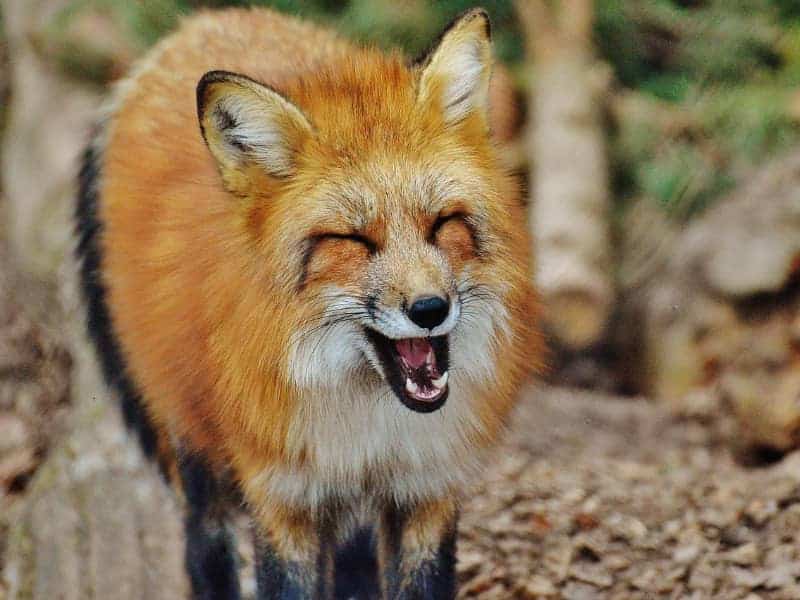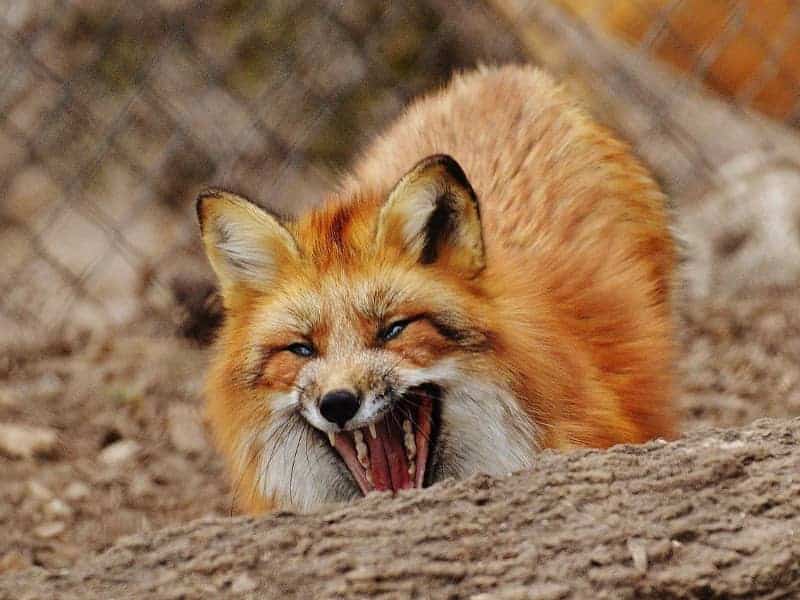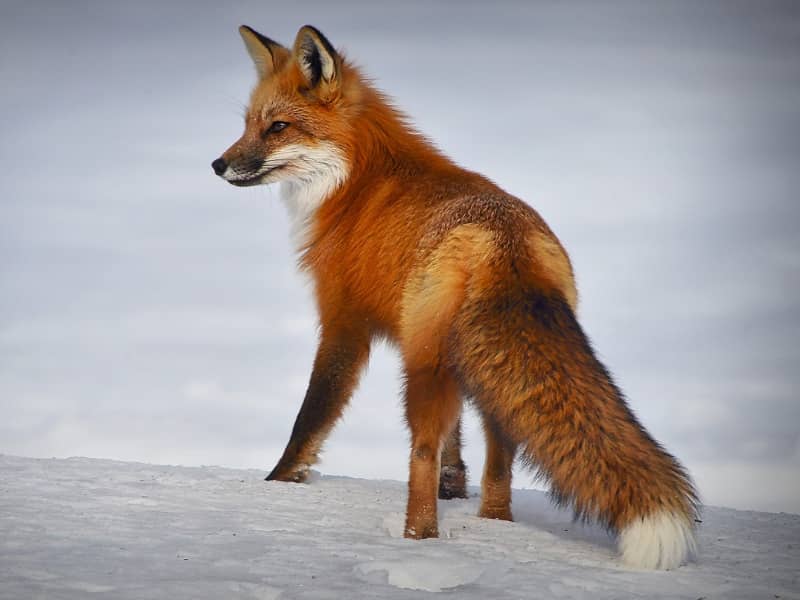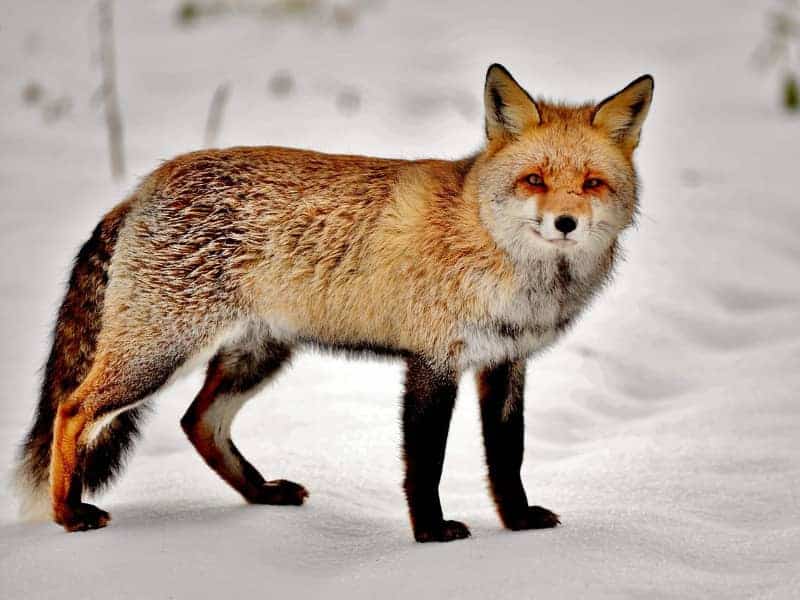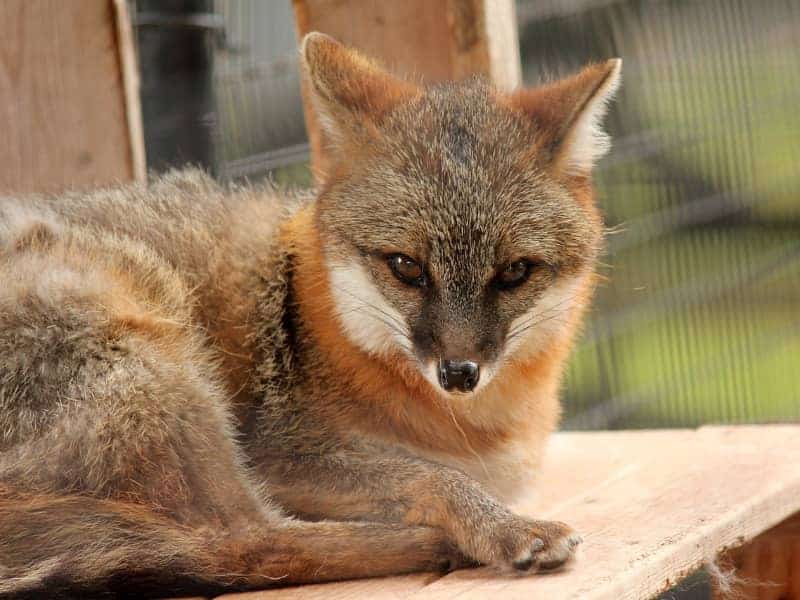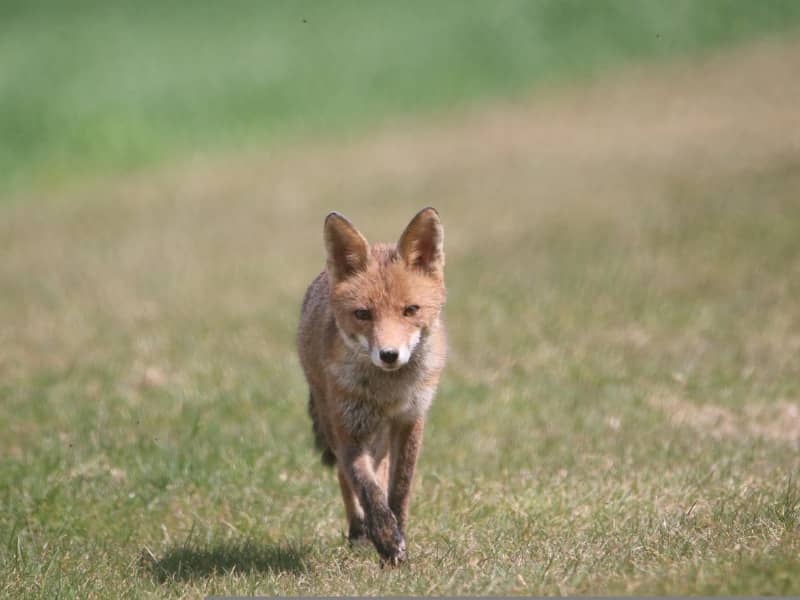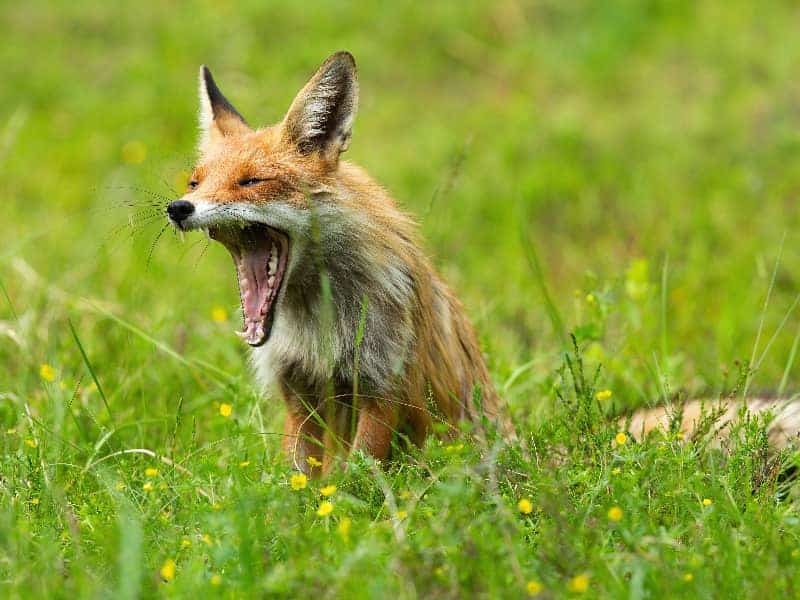
Fox bit
Welcome to the fascinating world of animal teeth - today under our magnifying glass: the fox teeth. Foxes are clever, adaptable and often a highlight of numerous fables and fairy tales. But have you ever wondered what the teeth of this cunning predator look like? Today we take the time to explore exactly that.
- Fox bit
- The incredible variety of fox teeth
- From milk teeth to permanent teeth
- The health of the fox's teeth
- The fox and its teeth in the animal world
- The fox teeth in the course of evolution
- Teeth and age - How the teeth reveal a fox
- The fox in research - What we can still learn
- Fuchs dentures: Research fields and open questions
The incredible variety of fox teeth
First of all, we should probably clarify that there are many different Types of foxes This means that there are also different types of fox bites. But don't worry, today we're going to focus on the most common one, the red fox. The red fox is usually the animal that comes to people's minds when they hear the word "fox".
From milk teeth to permanent teeth
Similar to humans, foxes also go through a process in which they lose their "milk teeth" and grow their permanent teeth. This process begins very early in a fox's life. In fact, newborn foxes have no visible teeth. The milk teeth only begin to erupt after about a month. By the time they are about four months old, they replace their milk teeth with their permanent teeth.
Now that you know a little about the general process of tooth development in foxes, let's go into more detail.
The canines - weapons of a hunter
The most conspicuous teeth in the fox's teeth are the canines. These long, pointed teeth are perfect for killing and holding prey. They are long and pointed, ideal for penetrating the skin and vital organs of prey. They are the main tools of a fox when it comes to killing prey.
The incisors - small but powerful!
A fox's incisors may be small, but they are extremely important. They are mainly used for biting off meat and nibbling on bones. In total, a fox has twelve incisors, six on the top and six on the bottom. They are sharp and strong, allowing the fox to effectively nibble on its prey and tear the meat from the bones.
The premolars and molars - the invisible helpers
The premolars are located between the canines and the molars. These teeth have a number of different functions. They help to hold the prey and can also be used to grind food. A fox's molars are particularly interesting. They are smaller than the canines, but have an important role in chewing and crushing food. They allow the fox to effectively crush its food before swallowing it.
The number of teeth - an impressive amount
Now that we've talked about the different types of teeth, it might be interesting to know how many teeth a fox actually has. The answer is surprising: an adult fox has a total of 42 teeth! That's an impressive number, considering that the human mouth normally only holds 32 teeth.
The health of the fox's teeth
Foxes are wild animals, and like all wild animals, they also have health problems to contend with. A fox's teeth are no different. Dental problems can be very problematic for a fox as they can affect its ability to catch and eat food.
Dental disease in foxes - a serious problem
The most common dental disease in foxes is periodontitis, an inflammation of the gums that can lead to tooth loss. This disease is usually caused by bacteria that accumulate in the fox's oral cavity and infect the gums. Another problem can be tooth breakage. This occurs when a fox bites down on something hard with its teeth and breaks one or more teeth. Tooth breakage can be very painful and can significantly affect the fox's ability to eat.
Dental care - a question of survival
Because foxes are wild animals, they can't just go to the vet when they have a dental problem. Instead, they have to find ways to keep their teeth as healthy as possible. One way foxes do this is through their diet. Foxes are omnivores, which means they eat both meat and plant foods. The diversity of their diet helps to keep their teeth strong and healthy.
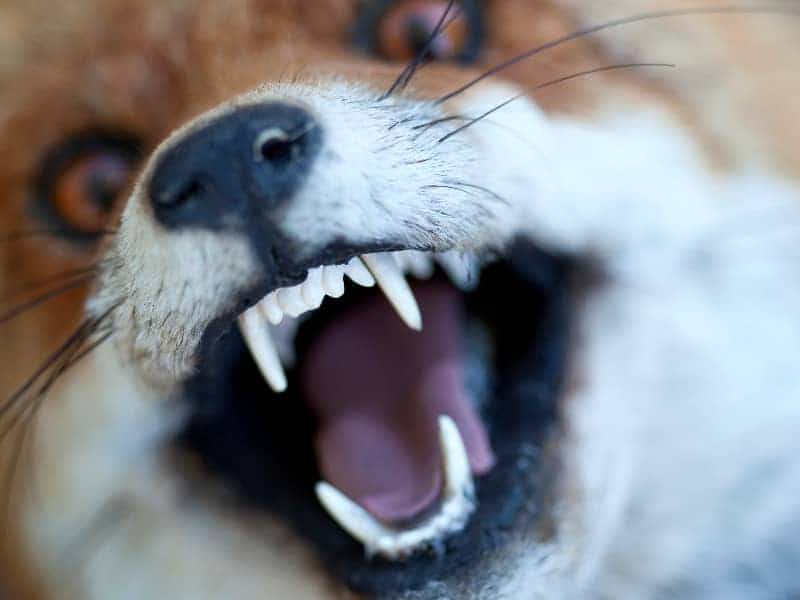
The fox and its teeth in the animal world
Foxes are fascinating animals and their dentition is a crucial part of what makes them such effective survivalists. But how do fox teeth compare to those of other animals?
A comparison of teeth - unique and yet similar
Compared to other animals, a fox's teeth are typical of a carnivorous mammal. They have a similar number of teeth as other carnivores and similar types of teeth. However, there are also some differences. For example Foxes compared to dogs larger canines, which makes them more effective hunters.
The fox teeth in the course of evolution
Evolution has perfectly adapted the fox's teeth to its environment and nutritional needs. The long, pointed canines, strong incisors and versatile premolars and molars are all designed to enable the fox to hunt, kill and eat its prey effectively. It is a miracle of nature.
We now have a good understanding of what a fox bit looks like, how it works and why it is the way it is. But there is still so much more to learn. Because the world of foxes - and their teeth - is an inexhaustible source of fascination. Let's stay curious and continue to explore the secrets of nature!
Teeth and age - How the teeth reveal a fox
It is said that you can tell the age of a horse by its teeth, but does the same apply to foxes? In fact, a fox's teeth can tell us a lot about its age.
How old is the fox? - The teeth provide information
The teeth of a young fox are sharp and shiny, whereas the teeth of an older fox are often worn down and may not be as bright. Similarly, broken or missing teeth can indicate that a fox is older. Of course, these are only general indications and there can be exceptions, but on the whole, a fox's teeth give us a pretty good indication of its age.
Teeth and lifestyle
Not only the age, but also the lifestyle of a fox can be read from its teeth. For example, broken teeth can indicate that the fox has been involved in fights or eats hard food. Dental diseases can also allow conclusions to be drawn about a fox's diet and state of health. For example, foxes that feed heavily on human waste are more susceptible to tooth decay and other dental problems.
The fox and its teeth in human culture
The fox plays a major role in human culture. In many cultures and in numerous stories and fables, it is portrayed as a cunning and sly animal. But what does this have to do with its teeth?
The fox in literature - a symbol of slyness and cunning
In many stories, the fox uses its teeth to solve problems or to outwit other animals. His sharp teeth often symbolize his cunning and his ability to adapt to a wide variety of situations. Just as the fox in the wild uses its teeth to survive, the literary fox uses its "teeth" - i.e. its mind - to overcome obstacles.
The fox as hunter - respect and reverence
In some cultures, such as the North American natives, the fox is revered for its hunting skills. Its sharp teeth are often seen as a sign of its power and strength. In such cultures, the fox is often portrayed as brave and fearless, characteristics that could also be attributed to its impressive teeth.
The fox in research - What we can still learn
The fox and its teeth also play a role in science. There is still much we can learn about these fascinating animals, and their dentition can help us unlock some of these secrets.
Fuchs dentures: Research fields and open questions
For example, researchers are investigating how fox teeth have developed over the course of evolution and how they differ from the teeth of other carnivores. They are also investigating how diseases affect fox dentition and what this means for the health of the fox population as a whole. There is still so much to discover and fox dentition will help us answer some of these exciting questions.
Although we have taken an in-depth look at fox teeth today, this is just a small insight into the fascinating world of foxes and their teeth. There is so much more to discover and learn. But one thing is certain: the fox's teeth are an impressive example of the wonders of nature and a reminder of how perfectly animals can adapt to their environment.
Author

-
Garden animal - A life with nature
Welcome to my animal blog! My name is Dirk and I am happy to take you on my journey through the fascinating world of animals and gardening.
Born 54 years ago, I have had an insatiable curiosity for the animal world around me since childhood. Although I have moved professionally in other industries, my true passion has always been animals and nature. It is remarkable how a small garden has become such an important part of my life.
Many of my fondest memories are associated with the animals that share our home. Whether it's the curious squirrels that scurry across the trees in the morning, the colorful variety of birds that visit our feeders, or the busy bees and butterflies that pollinate our flowers, every moment with them is invaluable to me.
This blog is my contribution to share my experiences, discoveries and insights with like-minded people. Here I will share stories of unforgettable encounters with animals, give tips on gardening and creating wildlife-friendly habitats, and take you on my journeys through nature.
Thank you so much for being here!
Cordial,
Dirk aka garden animal
Last posts
- 27. February 2024PetsVeganes Hundefutter – Grün und Gesund?
- 18. January 2024ChickensOregano für Hühner
- November 27, 2023HamsterDiurnal hamsters
- November 24, 2023HamsterHamster hammock

